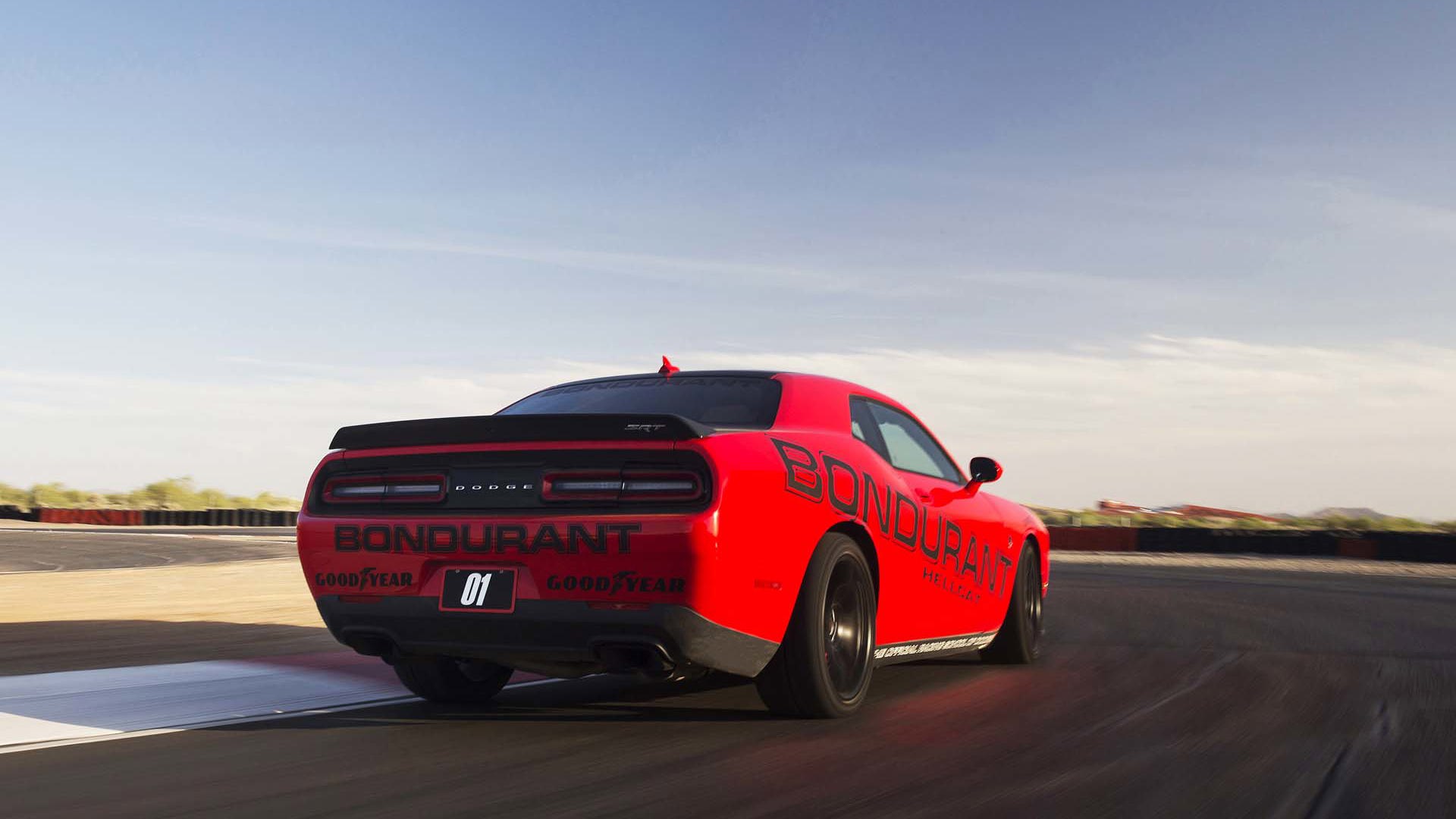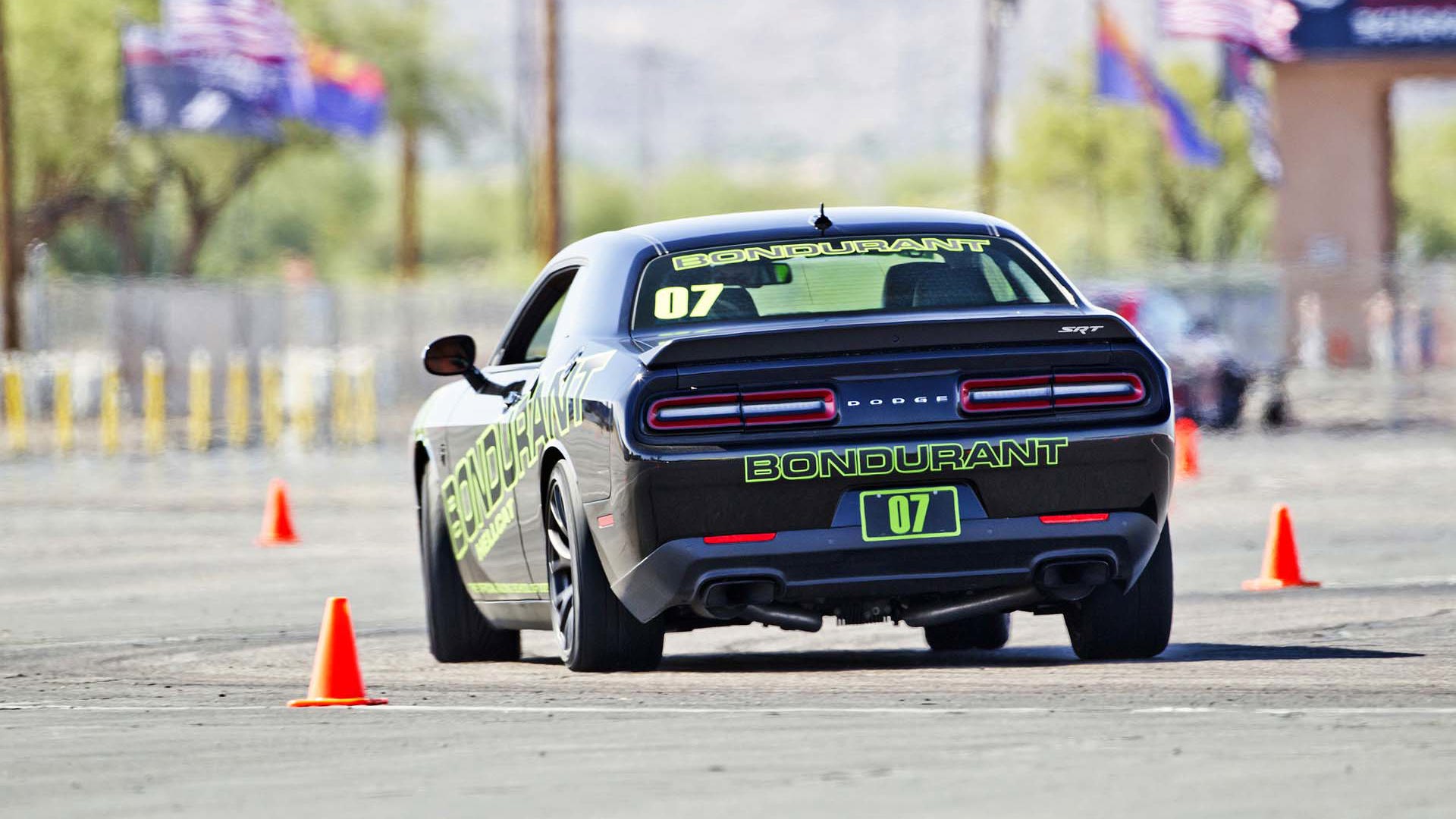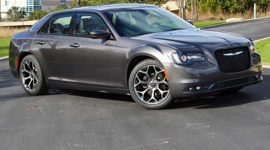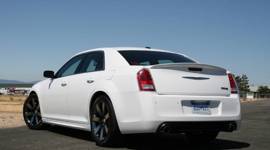The 2016 Dodge Challenger SRT Hellcat and Dodge Charger SRT Hellcat would seem to force the simplest, yet at the same time single hardest choice on modern muscle-heads since the age of the flat-head V8: do I want a sedan or a coupe with 707 horsepower? Unfortunately, it's not quite as straightforward as that: while these two machines share a platform, the product planners at Pentastar headquarters have peppered the build sheets of each model with the kind of individual touches that give them their own distinct personality.
If only it were a mere question of how many doors you wanted to haul from one burnout competition to the next. Since it's not, why not take this quiz to find out which of Dodge's hellions would fit best in your own demonic driveway?

1. Do you remember the 70s?
A. Yes
B. If you remember them, you weren't really there
C. I'm a Millennial
Dragon-slaying horsepower aside, it's clear that the next-most appealing aspect of the Dodge Challenger are its retro-muscle car looks. Recently updated – or at least, modernized as much as possible without killing the 'Dazed and Confused' vibe thrown off by the full-size coupe – the Challenger is by far the most nostalgia-inducing, attention-grabbing member of the Hellcat family. Anything but subtle, the Challenger trumps the Charger's slightly more stealthy presentation and appeals to extroverts and anyone trying to relive their first few years with a driver's license.

2. What About Those Extra Doors?
A. You Don't Need Them
B. Unless You Need Them
Both the Charger and Challenger Hellcat flavours ride on a version of the same LX platform. From a passenger perspective, what this really means is that the Challenger's bulky exterior proportions translate into the biggest backseat you'll find in any almost any coupe on the market. In fact, there's not a huge difference between the rear quarters in the Challenger SRT Hellcat and the Charger SRT Hellcat, with the important distinction that if you have a child seat, it's a lot easier to access the second row in the four-door model.

3. But They Each Have 707 Horsepower, Right?
A. Yes
B. Yes
Don't look for any differences under the hood of the Dodge Charger SRT Hellcat and Dodge Challenger SRT Hellcat. Each features the same 6.2-litre, 707 horsepower V8 that makes use of a supercharger to also produce 650 lb-ft of torque, numbers that feel lifted directly out of a Fast and Furious sequel. Of course, there's one key difference between the two Hellcat drivetrains that for some will be a deal-breaker: only the Challenger can be ordered with a six-speed manual transmission as an option. The Charger gets an excellent eight-speed automatic as standard equipment (also available with the two-door Hellcat).
If you don't feel up to the task of dealing with 707 horses on a regular basis, or if you have to lend the car to a (slightly) less responsible driver, then Dodge has your back. Each Hellcat comes with both a red key and a black key, with the latter limiting engine output to 500 ponies - a figure that the mad scientists at SRT decided was marginally more responsible.

4. Which Key Is Right For Me? Red or Black
A. Take the black key, and bury it in your backyard
B. Seriously, do it
C. Never ask us this question again
No one should ever use the black key. If you lose the red key, drive something else. Take the bus. Walk. Don't be 'that' person.

5. I Heard One of Them Was Faster
A. They are both really fast
B. But yes, one is faster
C. Not that it matters
So as it turns out, the vagaries of aerodynamics have conspired to create a small gap between the top speeds of the two Hellcats. The shorter, stubbier Challenger elbows its way to a terrifying 199 mph (318 km/h), while the Charger's more athletic body work offered enough of a canvas for SRT's engineering team to push past the coupe and peg terminal velocity at 204 mph (326 km/h). This is particularly astounding when you consider that each car weighs over two tonnes. The wheelbase difference between the two cars also helps provide extra stability at almost any speed, with the Charger SRT Hellcat presenting a calmer (relatively) path to losing your license.

6. Are The Hellcats Hard To Launch?
A. Yes
B. Hell yes!
C. Even from a roll
The biggest problem with 707 horsepower is that it's 707 horsepower, and current tire technology simply isn't prepared to deal with all that grunt in a street situation. Throw in the fact that the relatively narrow 9.5-inch rims outfitted to the Hellcats only allows so much rubber to be tucked under the rear fenders and it's clear that once the novelty of 24/7 burnouts has faded you'll really have to work hard to launch either car off of the line. This is true even with the standard launch control system that comes with both models. Which I have personally seen struggling to even adequately brake the rear wheels in preparation for a forward sprint. Officially, the numbers are 3.6 seconds to 100 km/h for the Challenger SRT Hellcat and 3.4 seconds for the Charger SRT Hellcat. Unofficially, you'll be lucky to not end up perpetually sideways at the drag strip without a lot of practice.

7. Will I Die If It Rains/Snows/I Encounter a Plague of Locusts
A. 'No' to rain
B. 'Maybe' to snow
C. Can't help you with the locusts
A funny thing happened in the middle of driving through a torrential downpour while behind the wheel of the Charger SRT Hellcat: I stood on the gas pedal and absolutely nothing happened. Well, that's not entirely true, as the rear wheels shuddered slightly before the traction control system killed the throttle and kept me safe. I consider that a huge win for Dodge's electronic traction and stability control systems, which offer multiple drive modes - Track, Sport, and Street - to help you shape both the Challenger and the Charger's power delivery and handling characteristics to best suit the driving environment. Still, I'm not sure I'd want to install a set of winter tires and have a go at piloting the Hellcat through a blizzard. It feels a little too much like Icarus flying too close to the sun.

8. Which One is Better Value?
A. The Charger SRT Hellcat costs $76,945
B. The Challenger SRT Hellcat costs $76,445
C. Flip a coin
It's rare to assign words like “value” to a pair of the most powerful V8 production cars ever built, but taking a step back to consider them against their performance peers reveals that the Hellcats are capable of hanging with cars that cost multiples of their sticker price. As for which one is the best fit for your particular lifestyle, price simply isn't going to be much of a factor. With very little separating the bottom lines of the Charger and the Challenger you'll have to take into account just how much styling, rear seat access, high-speed bragging rights (and stability), and a third pedal really mean to you.
Pricing: 2016 Dodge Charger SRT Hellcat
Base Price: $76,945
Options: None
Freight & PDI: $2,495
Price as Tested: $80,540
Pricing: 2016 Dodge Challenger SRT Hellcat
Base Price: $76,445
Options: None
Freight & PDI: $2,495
Price as Tested: $80,040
































